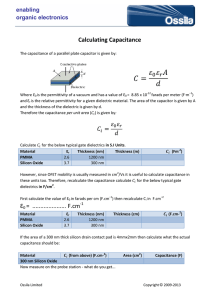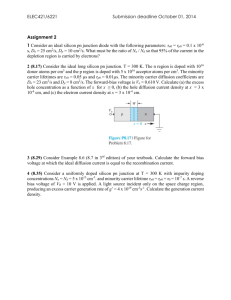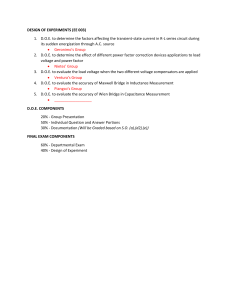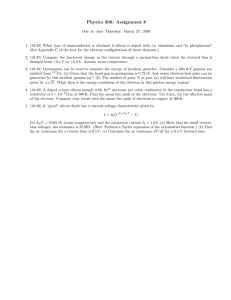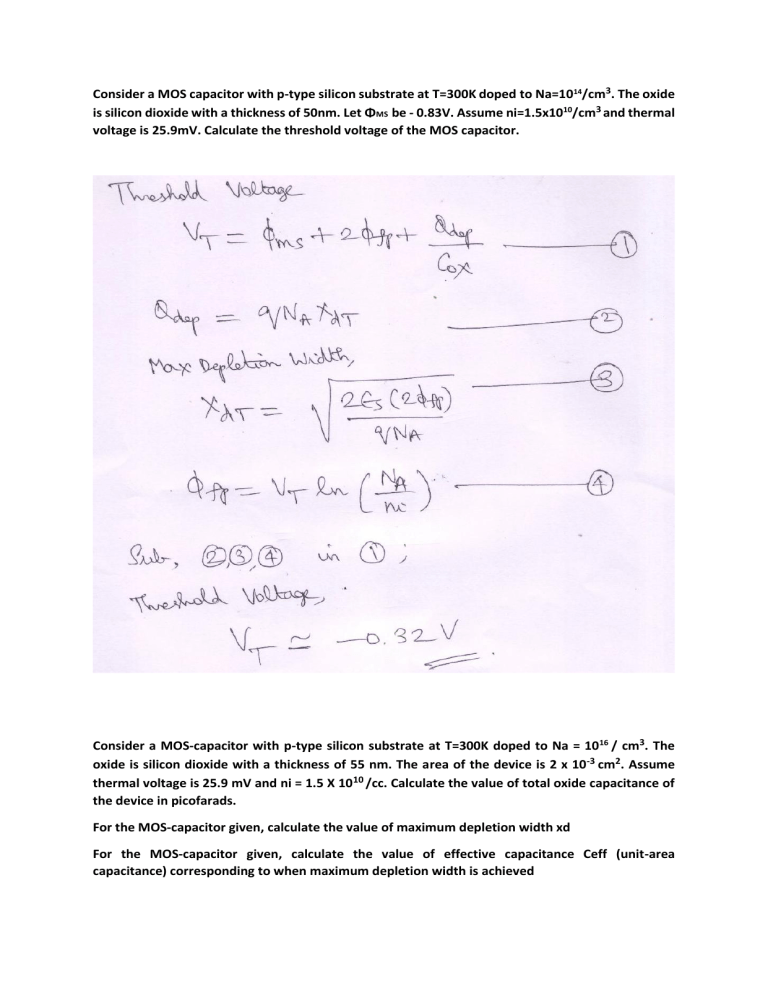
Consider a MOS capacitor with p-type silicon substrate at T=300K doped to Na=1014/cm3. The oxide is silicon dioxide with a thickness of 50nm. Let ΦMS be - 0.83V. Assume ni=1.5x1010/cm3 and thermal voltage is 25.9mV. Calculate the threshold voltage of the MOS capacitor. Consider a MOS-capacitor with p-type silicon substrate at T=300K doped to Na = 1016 / cm3. The oxide is silicon dioxide with a thickness of 55 nm. The area of the device is 2 x 10-3 cm2. Assume thermal voltage is 25.9 mV and ni = 1.5 X 1010 /cc. Calculate the value of total oxide capacitance of the device in picofarads. For the MOS-capacitor given, calculate the value of maximum depletion width xd For the MOS-capacitor given, calculate the value of effective capacitance Ceff (unit-area capacitance) corresponding to when maximum depletion width is achieved Consider a n+ polysilicon gate and a p-type silicon substrate at 300 K, doped to Na = 5x1016/cc. Let Qox = 1.6 x 10-8 C/cm2 , ɸms = -1.13V, QBO=-8.64 x 10-8 C/cm2 , ni =1.5x1010/cc and the oxide is SiO2 with ξr = 3.9 Calculate ɸf in volts Calculate the oxide thickness (nm) such that the threshold voltage is +0.7V Explain constant electric field scaling and indicate the modified parameter values for a fixed scaling factor Explain band bending in a metal-SiO2-Si structure with changing metal voltage Explain short channel effect on transistors with L < 3.5 µm. How does Vth change with SCE? Explain Drain Induced Barrier Lowering. How does Vth change with DIBL? Explain channel engineering and source/drain engineering with appropriate diagrams Consider two transistors with transfer characteristics as shown above; Find S1 and S2 (mV/decade). Which one will you prefer and why? Which among S1 and S2 is theoretically impossible, why? Find the depletion capacitance of the theoretically viable case, if Tox = 10nm Find the S value at liquid nitrogen temperature (77K) The Fermi energy level for a particular material at T=300 K is 5.50 eV. The electrons in this material follow the Fermi–Dirac distribution function. (a) Find the probability of an electron occupying an energy at 5.80-7.15 eV. (b) Repeat part (a) if the temperature is increased to T = 700-1000 K. (Assume that EF is a constant.) Consider the energy levels shown in the figure below. Let T = 300 K. (a) If E1 – EF = 0.30 eV, determine the probability that an energy state at E = E1 is occupied by an electron and the probability that an energy state at E E2 is empty. (b) Repeat part (a) if EF- E2 = 0.40 eV. Silicon at T=300 K is doped with arsenic atoms such that the concentration of electrons is n0 =7x1015 cm-3. (a) Find Ec - EF (b) Determine EF - Ev (c) Calculate p0. (d) Which carrier is the minority carrier? (e) Find EF - EFi

